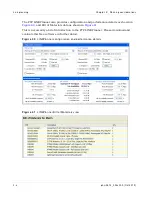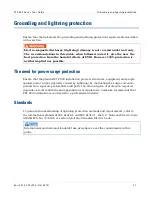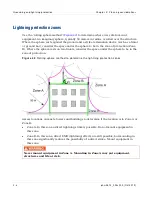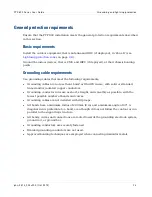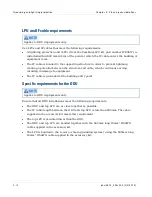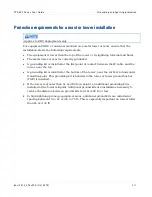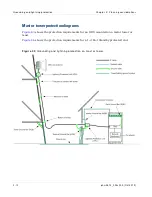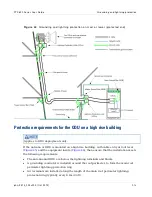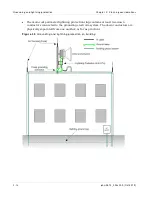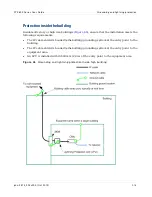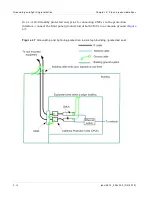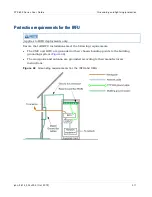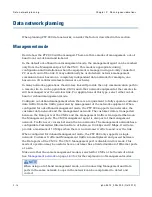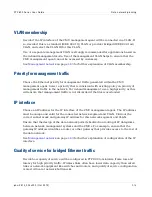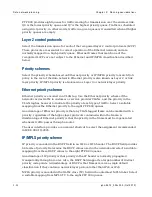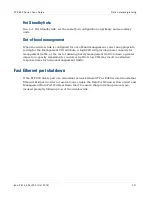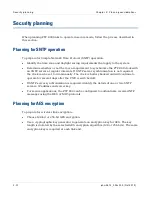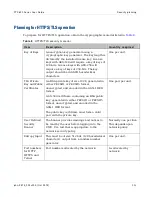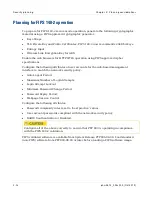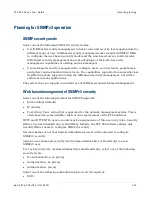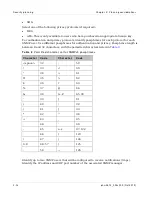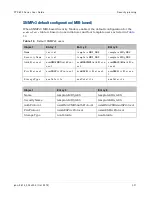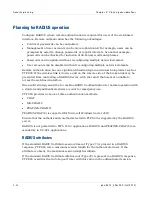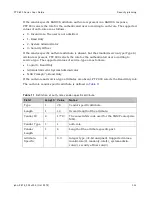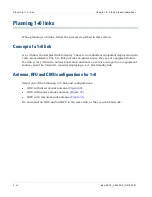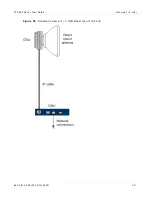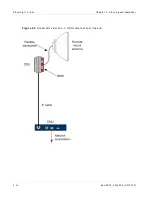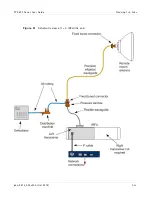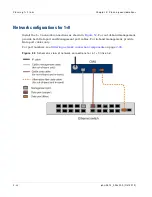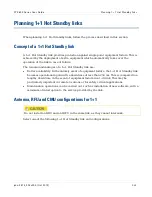
Dat a net work planning
Chapt er 2: Planning considerat ions
2- 20
phn- 2513_004v000 ( Oct 2012)
PTP 800 provides eight queues for traffic waiting for transmission over the wireless link.
Q0 is the lowest priority queue and Q7 is the highest priority queue. Traffic is scheduled
using strict priority; in other words, traffic in a given queue is transmitted when all higher
priority queues are empty.
Layer 2 control protocols
Select the transmission queue for each of the recognized layer 2 control protocols (L2CP).
These protocols are essential to correct operation of the Ethernet network, and are
normally mapped to a high priority queue. Ethernet frames that match one of the
recognized L2CPs are not subject to the Ethernet and IP/MPLS classification described
below.
Priority schemes
Select the priority scheme based on Ethernet priority or IP/MPLS priority to match QoS
policy in the rest of the data network. Ethernet priority is also known as Layer 2 or link
layer priority. IP/MPLS priority is also known as Layer 3 or network layer priority.
Ethernet priority scheme
Ethernet priority is encoded in a VLAN tag. Use the Ethernet priority scheme if the
network carries traffic in customer or service provider VLANs, and the priority in the
VLAN tag has been set to indicate the priority of each type of traffic. Select a suitable
mapping from the Ethernet priority to the eight PTP 800 queues.
An advantage of Ethernet priority is that any VLAN-tagged frame can be marked with a
priority, regardless of the higher-layer protocols contained within the frame. A
disadvantage of Ethernet priority is that the priority in the frame must be regenerated
whenever traffic passes through a router.
The user interface provides a convenient shortcut to select the assignment recommended
in IEEE 802.1Q-2005.
IP/MPLS priority scheme
IP priority is encoded in the DSCP field in an IPv4 or IPv6 header. The DSCP field provides
64 levels of priority. Determine the DSCP values used in the network and select a suitable
mapping from these DSCP values to the eight PTP 800 queues.
An advantage of IP priority is that priority in the IP header is normally propagated
transparently through a router. Also, the DSCP field supports a large number of distinct
priority code points. A disadvantage of DSCP is that frames receive a single default
classification if they contain a network layer protocol other than IPv4 or IPv6.
MPLS priority is encoded in the traffic class (TC) field in the outermost MPLS label. Select
a suitable mapping from MPLS TC to the eight PTP 800 queues.
Содержание PTP 800 Series
Страница 1: ...Cambium PTP 800 Series User Guide System Release 800 05 02 ...
Страница 40: ...Licensing requirements About This User Guide 10 phn 2513_004v000 Oct 2012 ...
Страница 232: ...Limit of liability Chapter 3 Legal information 3 22 phn 2513_004v000 Oct 2012 ...
Страница 322: ...Radiation hazard assessm ent Chapter 4 Reference information 4 90 phn 2513_004v000 Oct 2012 ...
Страница 418: ...Replacing IRFU components Chapter 5 Installation 5 96 phn 2513_004v000 Oct 2012 Figure 1 1 0 IRFU components example ...
Страница 428: ...Replacing IRFU components Chapter 5 Installation 5 106 phn 2513_004v000 Oct 2012 ...
Страница 552: ...Configuring for FIPS 140 2 applications Chapter 6 Configuration and alignment 6 124 phn 2513_004v000 Oct 2012 ...
Страница 630: ...Using recovery mode Chapter 7 Operation 7 78 phn 2513_004v000 Oct 2012 ...
Страница 648: ...Glossary I V phn 2513_004v000 Oct 2012 ...

